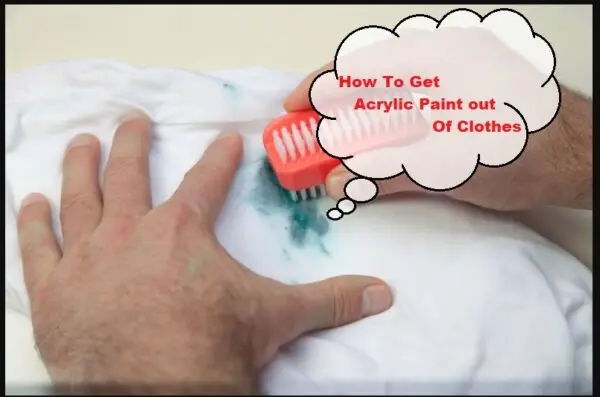Table of Contents
How To Get Acrylic Paint out Of Clothes
How To Get Acrylic Paint out Of Clothes – Acrylic paint is a favorite among both novice and professional crafters. It is quick-drying, easy to layer, and safer around pets and children.
Even if little hands get involved, you can’t help but feel that paint will end up somewhere other than your canvas. Acrylic paint is loved by both professional and novice crafters.
Acrylic paint is a favorite among both novice and professional crafters. It’s quick-drying, easy to layer, and safer around children and pets.
You must act fast if you want to remove acrylic paint splatters. It may be nearly impossible to remove stains if you wait.
Ileana Tejada is a sales representative at Arch Art Materials in San Francisco. She suggests you try to remove the paint by chipping away at it.
She says that acrylic paint is almost impossible to remove once it has dried, but you can try it. Individuals can scrape the fabric as much as they want using a scraper and soap.
However, it is impossible to guarantee that the fabric won’t be damaged. These expert-recommended methods for removing acrylic paint can be used to save your clothes. But it would help if you acted quickly.
Treat with Isopropyl Alcohol
Gagliardi says that isopropyl alcohol can be used to remove fabric stains. Tejada agrees with this sentiment but suggests that you use isopropyl alcohol to follow up on the stain. It is worth trying.
Tejada states that it is best to wash your clothes immediately with soap and water, then follow up with alcohol and a toothbrush. Wash the clothes in the washer as soon as it is done. It’s very difficult to remove paint from fabric if it dries.
Gagliardi suggests gentle scrubbing to remove the stain. She also recommends either a nylon brush or a discarded toothbrush for applying detergent.
Apply Laundry Detergent
Clorox’s in-house cleaner Mary Gagliardi stresses that you must deal with the stain immediately.
She is also known by the nickname “Dr. Laundry.” Stop what you’re doing and take off the clothes. Next, scrape as much paint from the clothing as possible.
Apply liquid laundry detergent to the stain. Do this gently but quickly! Apply the detergent to the stain and rub it in.
You can use a nylon brush such as a toothbrush to give the fabric a quick scrub. Gagliardi recommends rinsing the stained item with cold water after applying detergent.
Then, repeat the process as necessary to remove any remaining paint. It may take several attempts depending on how severe the stain is.
Apply one more detergent to the stain and place it in the washer. Air dry afterward. Gagliardi points out that this cleaning method is unsuitable for carpets or upholstery.
It’s best to use it on clothes. You can still apply detergent to the affected area if you cannot scrub immediately.
This will increase your chances of removing the stain later. Gagliardi states that it is always better to remove the stain as soon as possible.
“If you cannot do so (or you don’t have the time), at least you can apply detergent to the stain to increase your chances of getting an acrylic stain out.
This will happen up to an hour later. Laundry detergent (and dish detergent to the same effect) have been mentioned as key components of the removal process.
Gagliardi states that detergent cleaning agents can remove paint ingredients as long as it is still damp. She says, “This is a very difficult stain to get rid of.
It’s all about technique (repeatedly apply detergent followed by rinsing) and timing (do it immediately and quickly).”
Avoid These Ingredients
You might have heard of Window cleaner and vinegar as potential solutions to an acrylic paint stain.
Gagliardi does not recommend these methods due to their high water content, which makes them ineffective for insoluble stains.
If you are thinking of pairing vinegar and ammonia, here’s a word for you: No. She says that ammonia should not be mixed with any other household cleaners.
Avoid industrial solvents like Acetone or paint thinner. Both, Gagliardi says, can dissolve acrylic paint. However, these solvents are designed for hard surfaces and won’t work well on soft surfaces like fabric.
Your washing machine could spontaneously ignite. Gagliardi states that even if you used repeated applications of Acetone to dry the fabric, there is a risk of spontaneous combustion.

